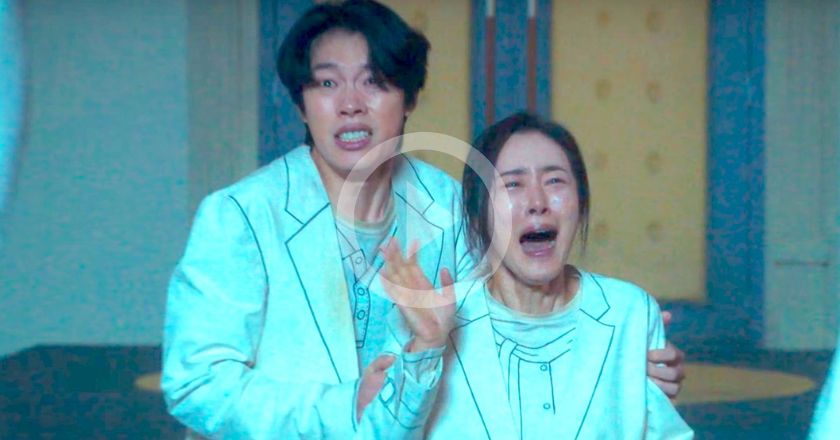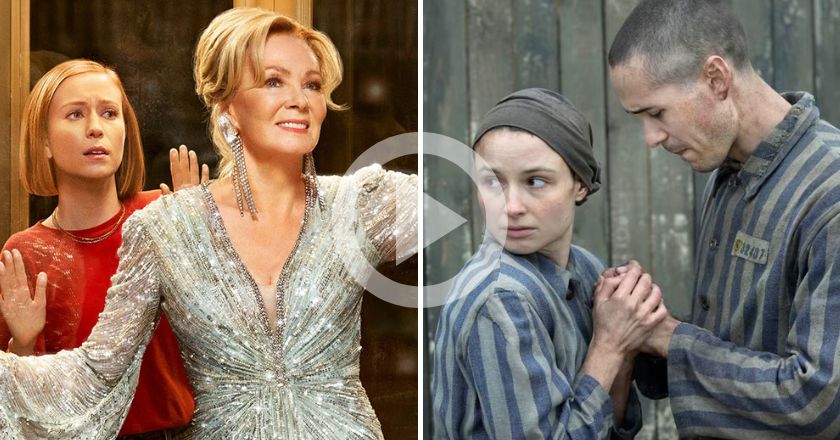
Structurally at least, you might call Sue Brooks’ (Japanese Story) latest offering, Looking for Grace, an antipodean Pulp Fiction. Stories criss-cross each other and change perspective, while sections are cut up into non-linear chunks that only make sense in relation to what precedes them. Not that it’s pulp, of course; Brooks’ characters are never that transparent. They approximate rather a mostly middle-class, white Australian reality: basically decent, caught amid the ever-fatiguing struggle of ordinary life.
Grace (Odessa Young) has robbed her parents’ safe and taken off on a coach across the Western Australian wheat-belt. After she beds a charming stranger, she is left to wander about penniless. Meanwhile, her parents – Radha Mitchell, her neurotic mum, and Richard Roxburgh, her almost-cheating dad – launch a desperate search with the aid of octogenarian investigator Tom (Terry Norris).
The characters are the most consistent things about Looking for Grace. They all overlap, occupying a comparative mental, social, cultural space within the same world. Taken together, the tone of their individual stories is jarring. The movie morphs indiscriminately between teenage coming-of-age drama, comic marital melodrama, road-trip, and tragedy. The latter seems particularly incongruous upon arrival. Not that it isn’t moving, but suddenly you find yourself watching another type of picture, from neurotic wry-humour to something else entirely without warning.

All of which makes Looking for Grace slightly more difficult to get into than it should be, or would appear to be. Brooks barely allows her audience to settle into one mode of story before she abruptly shifts it away to be replaced by another. As the film progresses and the disparate elements begin to make sense of each other, it is easier to appreciate her mosaic approach; though it is fair to say the inconsistency of tone does not completely work, even if it is quite clever.
The greatest strength of the film is rather in the performances. Brooks allows her actors – and her mise en scène – a great sense of brevity. Because she is not concerned with filling every available crevice with either dialogue or action, the landscapes – often both desolate and beautiful – and the performers are free to communicate their own ambiguities between the spaces. Roxburgh and Mitchell are by turn funny, tender, neurotic and melancholic. They play their parts instinctively, intuitively, and their interaction is great to watch. And while Terry Norris’ elderly P.I. delivers equally on pathos and comic relief, it is Odessa Young who truly stands out, her great turn marking her as an actress to watch. As the angsty Grace, Young’s performance perfectly captures the moment in time when, as teenagers, we are caught between our own burgeoning adult assertions and the need to be loved and tended to as children. As the premise upon which the film hinges, Young purports herself superbly.
Overall, Looking for Grace is an above average Australian film. Sure, there are a few flaws, but the ways in which it compensates are more than adequate. If Brooks’ non-linear approach is not completely successful, her willingness to experiment with narrative is still refreshing. Most of all, the film has an engaging emotional honesty to its story and its characters, giving Looking for Grace a sense of humility. It is often funny, but never over the top, never resorting to caricature as Australian films often do. Brooks has made an entertaining film in which there is much to admire.
THE REEL SCORE: 7/10
– M.L.







